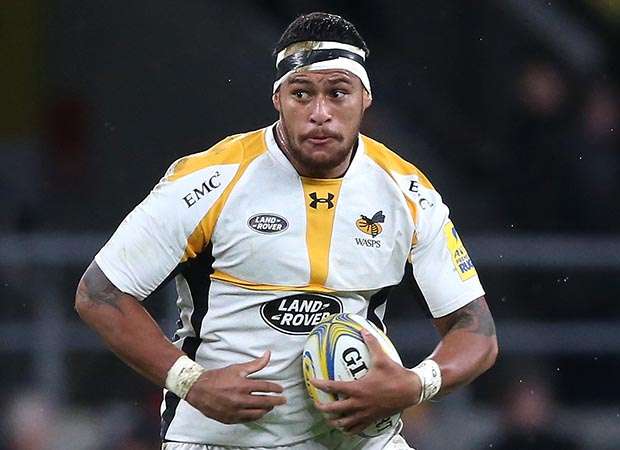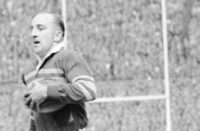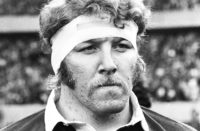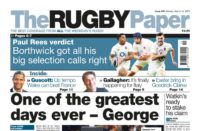 England, Ireland, Italy and Scotland are in the process of acquiring No.8's from the Southern Hemisphere for the New Year. France have the option of following suit which, in a Six Nations context, leaves Wales the odd country out at a time of seasonal gifts. They have either displeased Mr S Claus or decided that having found a gem of the back row species on their own doorstep in Taulupe Faletau, they are still ahead of the game.
England, Ireland, Italy and Scotland are in the process of acquiring No.8's from the Southern Hemisphere for the New Year. France have the option of following suit which, in a Six Nations context, leaves Wales the odd country out at a time of seasonal gifts. They have either displeased Mr S Claus or decided that having found a gem of the back row species on their own doorstep in Taulupe Faletau, they are still ahead of the game.
By the time Eddie Jones addresses the summer series in South Africa, England's new head coach will be free to slap a Red Rose jersey on Nathan Hughes, of Wasps. The single most dynamic factor behind his club's renaissance, the Fijian is young enough at 24 to be at his peak come the next World Cup.
Ireland do not have to wait any longer for their new No.8 – the formidable CJ Stander. His three-year metamorphosis from Junior Springbok into a bona fide wearer of the green ended last month, clearing the way for his formal capping in the New Year.
A man-of-the-match winner on a scale grand enough to keep the carpenters of Limerick busy building cabinet extensions, Stander does more than offer Ireland an immediate alternative to Jamie Heaslip. Munster have already recognised his leadership ability and it may be but a matter of time before he succeeds Paul O'Connell as captain of his new country.
Nobody dare accuse Stander of taking an easy route into the Test arena. Having joined Munster three years ago at the start of the post-O'Gara era, he has done more than anyone to arrest the decline and intends to go on doing so for some time to come.
A contract extension signed the other day means he and Munster will remain an item until June 2018, at the earliest. At 25, Stander has enough time on his side to make his conversion a smart piece of business by the Irish recruitment department.
Italy's No.8 is also a South African, Dries van Schalkwyk who can safely claim to be the first player to reach the Six Nations after a trek round around his native land – from Pretoria (Blue Bulls), Johannesburg (Golden Lions), the Leopards (Potchefstroom) and the Southern Kings (Port Elizabeth).
His resolve during three years spent shoring up Zebre in many a lost cause has impressed the Italians. As soon as he qualified, the Italians rushed him into a pre-Six Nations training camp last week in readiness for a probable debut against France in Rome in February. At 30, there is no time to be wasted.
Not to be outdone by England and Ireland, the Scots also have a young South African up their sleeve, a feat in itself given that Cornell du Preez tends to stand out in any kind of crowd. The Edinburgh No.8 will have qualified by the end of the season.
The Scots have turned the capping of back row forwards from distant shores into such a cottage industry that Du Preez's imminent arrival is almost old hat. Another South African, Josh Strauss from the Glasgow Warriors, beat him to it in time for the World Cup.
A trio of New Zealanders – Blair Cowan, Hugh Blake and John Hardie – have also been converted in rapid succession. France have a Kiwi No.8 on their horizon – Fritz Lee of Clermont – although he will be 30 by the time he qualifies at the end of next year.
World Rugby's head-in-the-sand refusal to make residential qualification more difficult by increasing the period from three years to five has given every country the green light to sign uncapped material, mainly from south of the Equator, and groom them for the Test arena.
The Irish call them ‘Project Players' and there are plenty more where CJ Stander came from. Wiehahn Herbst, whom Ulster harpooned from the Natal Sharks, is a tighthead prop from Klerksdorp not Claudy, Clogher or any other place in Ulster but that won't a matter a jot if he's still around when his three-year apprenticeship is up in March 2017.
Connacht have several in the pipeline, most notably Jake Heenan, a Junior All Blacks flanker whom head coach Pat Lam brought with him from Auckland to Galway. Bundee Aki, Connacht's ex-Chiefs centre, is halfway through his three years but well worth the wait on the evidence of his acrobatic try against Munster last week.
Yet another South African, Gerhard van den Heever, makes no secret of the main reason behind his move to Munster, to play for Ireland. And if the cynics are wondering where all the Irish grannies have gone, well Finlay Bealham has one which means that Connacht's Australian who can prop on either side of the scrum doesn't have to wait three years.
Players from South Africa and New Zealand capped by Six Nations' countries over the last ten years:
South Africans: 23
Full backs: Nick Abendanon (England), Scott Spedding (France).
Wings: Hal Luscombe (Wales).
Centres: Mike Catt, Brad Barritt, Stuart Abbott (all England).
Fly half: Greig Tonks (Scotland).
Scrum half: Rory Kockott (France).
Props: Matt Stevens (England), WP Nel (Scotland), Dario Chistolini (Italy), P de Villiers (France).
Hookers: Richardt Strauss, Rob Herring (both Ireland).
Locks: Andries Pretorius (Wales), Mouritz Botha (England), Carlo del Fava, Quintin Geldenhuys (both Italy).
Back row: Josh Strauss (Scotland), Antoine Claassen, Bernard le Roux (both France), Robbie Diack (Ireland), Hendre Fourie (England).
New Zealanders: 23
Full back: Mark van Gisbergen (England).
Wings: Sean Maitland (Scotland), Kaine Robertson (Italy), Lesley Vainikolo (England).
Centres: Jared Payne (Ireland), Shontayne Hape, Riki Flutey, Henry Paul (all England), Sonny Parker (Wales).
Fly half: Gareth Anscombe (Wales).
Scrum halves: Isaac Boss (Ireland), Grayson Hart (Scotland).
Props: Michael Bent, Rodney Ah You, Nathan White (all Ireland), Uni Atonio (France), Perry Freshwater (England).
Hooker: Dylan Hartley (England)
Lock: Michael Paterson (England).
Back row: John Hardie, Hugh Blake, Blair Cowan (all Scotland), Thomas Waldrom (England).


























